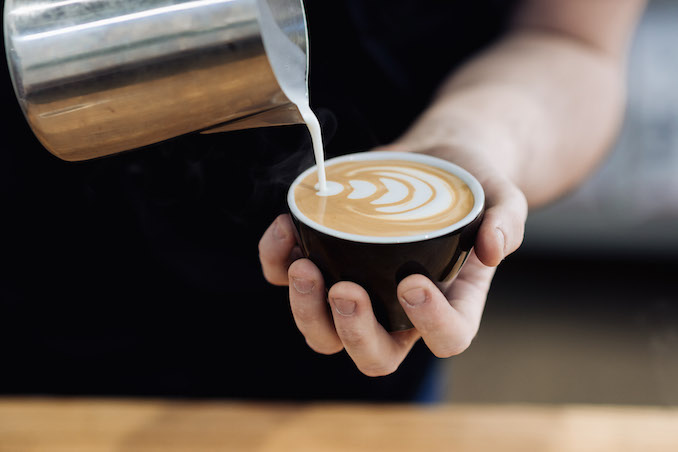Roasting coffee beans is a magical process where humble green beans undergo a remarkable transformation, releasing a symphony of captivating flavors and enticing aromas that tantalize our senses. This art form demands skill, knowledge, and a touch of intuition as heat is carefully applied and time is meticulously monitored.
The interesting alchemy of coffee roasting results in a sensory experience that goes beyond mere taste. The precision and craftsmanship involved in coffee roasting elevate it to an art form that captivates both the roaster and the coffee lover.
Exploring the Science of Coffee Roasting
Coffee roasting is not merely an art; it is also a complex science that involves a deep understanding of chemical reactions and physical transformations. Adding coffee creamers from Australia may enhance a cup of coffee, but you can further elevate your coffee experience by looking at coffee in its raw form, which involves the following aspects of the roasting processes:
- Maillard Reaction. This chemical reaction takes place between amino acids and reducing sugars in the beans, leading to the browning of the coffee and the development of rich flavors and aromas.
- Pyrolysis. Pyrolysis involves the breakdown of complex organic compounds under high temperatures, resulting in the release of volatile compounds. These volatile compounds are responsible for the enticing aromas that waft through the air during roasting.
- Temperature and Time. Roasting at different temperatures and durations can significantly impact flavor development and roast profile. Higher temperatures generally result in a faster roast, leading to darker, bolder flavors, while lower temperatures allow for more delicate and nuanced flavors to emerge.
- Physical Changes. As the beans heat up, moisture trapped inside them starts to evaporate. This loss of moisture affects the density and structure of the beans, ultimately influencing the extraction and brewing process.
Roasting is a balancing act between flavor development and preservation. As the beans are roasted, carbon dioxide, a natural byproduct of roasting, is released. To preserve the flavors, it is crucial to allow the freshly roasted beans to degas and rest before grinding and brewing. This allows for the dissipation of excess carbon dioxide, resulting in a more balanced and enjoyable cup of coffee.
Roast Levels and Flavor Profiles
Roast levels play a crucial role in determining the flavor profiles of coffee. Each roast level accentuates different aspects of the bean’s flavor profile, allowing coffee enthusiasts to explore a diverse range of tastes and find their preferred balance between acidity, sweetness, body, and intensity. Listed below are the roast levels and flavor profiles you may want to try:
- Light Roast. Delicate and vibrant, light roasts highlight the bean’s intrinsic flavors, with bright acidity, floral notes, and a lighter body.
- Medium Roast. Striking a balance, medium roasts offer a harmonious combination of acidity and sweetness, showcasing caramel and chocolate undertones.
- Medium-Dark Roast. Moving toward deeper flavors, medium-dark roasts unveil bittersweet notes, with a fuller body and a touch of roasted caramel.
- Dark Roast. Bold and intense, dark roasts bring robust flavors to the forefront, boasting smoky characteristics, low acidity, and pronounced bitter-sweetness.
Roasting Techniques from Around the World
Roasting techniques vary all over the world, reflecting the diverse palates and cultural preferences of coffee enthusiasts worldwide. Each technique brings uniqueness, inviting coffee lovers on a captivating journey through flavors and traditions. The following are some of the roasting techniques from around the world:
- Italian Espresso Roasting. Italy’s iconic espresso roasting technique creates dark, intense flavors with a heavy body and a rich, caramelized aroma.
- Scandinavian Light Roasting. Embracing brightness, Scandinavian roasters opt for light roasts that highlight delicate flavors, vibrant acidity, and a clean, tea-like mouthfeel.
- American Medium Roasting. American-style roasting strikes a balance, offering a medium roast that balances acidity, sweetness, and a smooth, well-rounded profile.
- Ethiopian Traditional Roasting. In Ethiopia, coffee is traditionally roasted in small batches over an open flame, resulting in distinct fruity and floral flavors with a unique smoky undertone.
- Turkish Roasting. Turkish coffee is roasted to a dark level, producing a strong, robust flavor profile and a thick, velvety texture, perfect for traditional Turkish coffee preparation.
- Brazilian Medium-Dark Roasting. Brazil’s approach leans towards medium-dark roasts, delivering nutty, chocolatey flavors with a medium body and low acidity.
- Vietnamese Roasting. Vietnamese coffee is often roasted with added butter or oil, yielding a rich, dark brew with a unique sweet and buttery character.
- Indonesian Dark Roasting. Indonesian coffees develop earthy, spicy notes and a heavy body, with a long-lasting finish through a deep roasting process.
- Japanese Precision Roasting. Japanese roasters focus on precision and consistency, carefully controlling the roast to highlight the bean’s natural sweetness and delicate nuances.
Indulge in the Art of Coffee Roasting and Unleash a World of Flavors
The journey from bean to brew is a captivating process that highlights the artistry and science of coffee roasting. The art of coffee roasting demands skill, knowledge, and a touch of intuition, as roasters strive to create a consistent and exceptional product.
Understanding the science behind coffee roasting not only empowers roasters to make informed decisions but also allows coffee enthusiasts to truly appreciate the complexity and intricacy of their favorite beverage. It is a testament to the dedication and passion that goes into every cup of coffee.

